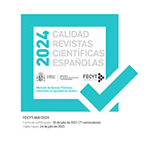The State Symbols of Bosnia and Herzegovina during the Twentieth Century
Abstract
This paper explores the relatively frequent changes of symbols that had been used to represent the land, province, territory and state of Bosnia and Herzegovina during the twentieth century. Throughout this time the small multi-ethnic Balkan country had mostly been a part or unit of larger state structures, such as the Austro-Hungarian Monarchy (1878-1918), Royal (1918-1941) and Socialist Yugoslavia (1943-1992). In 1992 it managed to gain its independence which was then followed by a three-year-long brutal military aggression and armed conflict that ended in 1995. Seeing as each regime change also required an adjustment of symbols which would have reflected the newly established political realities in Bosnia and Herzegovina, this case study can serve as an appropriate illustration of the significant role symbols can play in modern state-building processes and construction of collective identities. In analysing these changes, the author examined a number of legal texts and contemporary discussions, revealing that the political elites responsible for designing Bosnia and Herzegovina’s symbols often oscillated between traditional heraldic inspirations from the Middle Ages and the unconventional modern desire for neutral solutions.
Downloads
Article download
License
In order to support the global exchange of knowledge, the journal Eikon Imago is allowing unrestricted access to its content as from its publication in this electronic edition, and as such it is an open-access journal. The originals published in this journal are the property of the Complutense University of Madrid and any reproduction thereof in full or in part must cite the source. All content is distributed under a Creative Commons Attribution 4.0 use and distribution licence (CC BY 4.0). This circumstance must be expressly stated in these terms where necessary. You can view the summary and the complete legal text of the licence.











